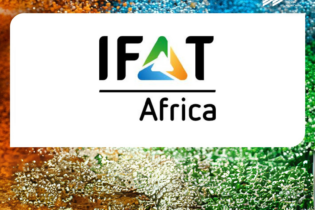
South Africa;s drought will prompt businesses to manage their water risk more carefully — photo credit: Scott Ramsay
The ongoing drought in South Africa has led to a heightened awareness of the importance of water, and businesses are under severe pressure to understand and respond to the risks related to this scarce but essential natural resource. To help companies ask the right questions about water, Sanlam and the World Wide Fund for Nature in South Africa (WWF-SA) have launched the
Water Risk Filter (
http://waterriskfilter.panda.org) – a free online tool addressing elements of water risk relevant to South African business.
The Water Risk Filter, developed by the WWF to assist companies assess water-related risks within their own operations, supply chains and growth plans, has been used by 2 700 organisations from 32 industry sectors globally since it was launched in 2012.
“We have partnered with leading financial services group Sanlam to introduce the Water Risk Filter in South Africa and would like to see all South African corporates assess their own water risks and receive guidance on what to do in response,” says Christine Colvin, head of WWF-SA’s Freshwater Programme.
Industry partnership
The collaboration between Sanlam and WWF-SA forms part of a broader partnership between the two organisations since 2007 to address South Africa’s various water challenges. Sanlam has committed a total of R50-million to the partnership, which is being ploughed into securing South Africa’s water source areas, promoting water stewardship, and empowering local government to integrate freshwater protection into plans. The partnership has already achieved a number of successful interventions in the marine and freshwater conservation landscape.
Portia Bangerezako, head of Sustainability at Sanlam, says it is crucial that South African corporates become part of a coordinated response to water risks. “For Sanlam, this is not just another corporate social investment initiative, it is a business imperative. While Sanlam is not a water-intensive business, we are ‘Wealthsmiths’, and we are very aware that our vision to be the leader in wealth creation and protection will not be realised if our country’s natural wealth, such as water, is not part of it,” she says.
Risk filter applications
The Water Risk Filter is designed for non-water experts and provides a structured set of risk indicators with very limited information needed from the user. It quantifies water-related risks for all industries in all countries at a global level, with the South African version providing an option to use local data for a more accurate assessment. It is ideal for large multinationals wanting to assess water risk in different parts of the world.
“It will indicate whether the highest risks are faced in the operations of a company or the broader basin, and whether they are physical, reputational or governance-based risks. A structured set of responses and up-to-date case studies will then give companies a flying start in mitigating risk and developing a water stewardship strategy,” says Colvin.
She adds that for investors or creditors, a water risk assessment can help identify potentially significant risks for return on investment. “This information can lead to technical advice on how to better manage water risk as well as pre-conditions for loans and investments and improvements for less risky investments.”
Bangerezako says more and more investors are taking environmental risks into consideration in their policy decision-making. “Asset managers are becoming increasingly aware of the risk of a shortage of water supply, which can influence companies’ income statements and balance sheets through interrupted production and reduced revenue growth, lower margins, increased liability risk and higher capital expenditure requirements. We are convinced that failure to take appropriate action could result in various challenges that negatively impact our economy.”
Evaluating top companies
To better understand how water risk impacts company share value, and how asset owners can drive better practice for water security, Sanlam and WWF-SA have been working together to evaluate the water risk of the top 40 JSE-listed companies.
Bangerezako has encouraged all South African corporates to make use of the Water Risk Filter and in so doing, play their part in preserving our most precious commodity. “At Sanlam, we realise that water is the lifeblood of every economy. The introduction of the Water Risk Filter is an imperative which we believe will contribute to the sustainability of our business and will play a role in ensuring a water-secure South Africa for future generations,” she says.
For further information visit
www.wwf.org.za








